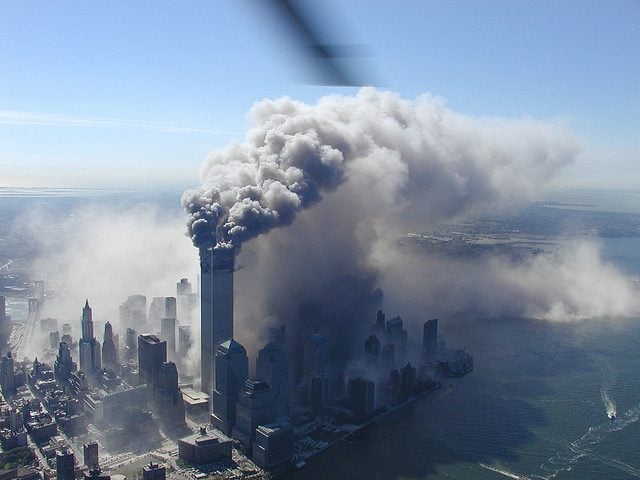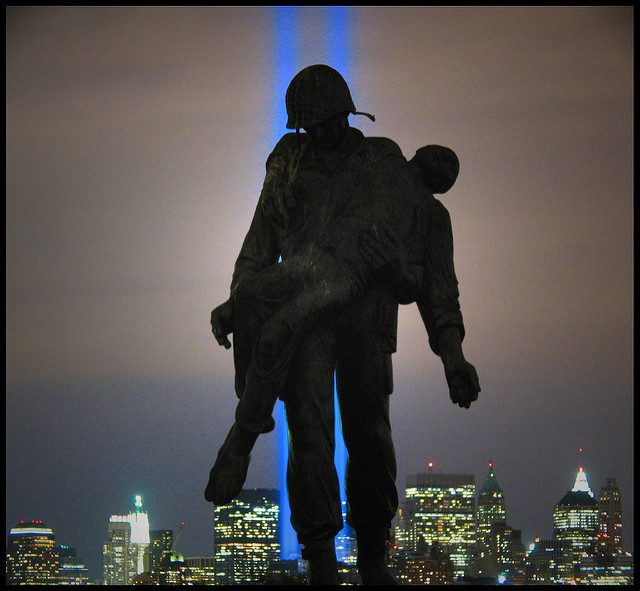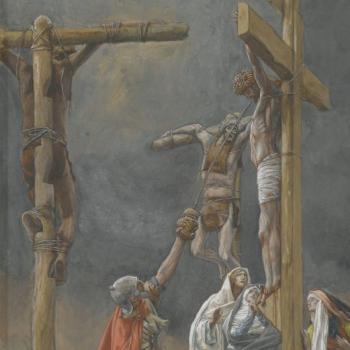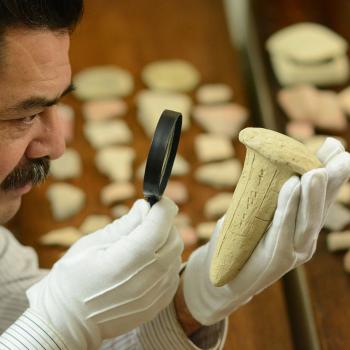
As I reflect upon the current cultural trauma politically and socially, I cannot help but wonder how much the extremely traumatic events of 9/11 have shaped America for the long-haul. In view of such musings, I searched online and located this article, “How the Pain of 9/11 Still Stays with a Generation.” It was written and published at The Conversation (now available on Patheos) on 9/9/16 by Dana Rose Garfin, Research Scientist, Department of Psychology and Social Behavior, University of California, Irvine. Here are some striking quotations from the article that is based on Garfin and her associates’ research:
“…It might be somewhat obvious that people directly exposed to a collective trauma like 9/11 might suffer from associated physical and mental health problems. What is less obvious is how people geographically distant from the epicenter or ‘Ground Zero’ might have been impacted.
This is particularly relevant when considering the impact of 9/11 on children and youth across America: Many reside far from the location of the actual attacks and were too young to have experienced or seen the attacks as they occurred. The point is people can experience collective trauma solely through the media and report symptoms that resemble those typically associated with direct trauma exposure.”
“The events of 9/11 ushered in a new era of media coverage of collective trauma, where terrorism and other forms of large-scale violence are transmitted into the daily lives of children and Americans families.”
“However, some researchers believe that even media-based exposure to collective trauma could likely have a longer-term impact on the attitudes and beliefs of those who grew up in a post-9/11 world. It is possible, for example, that exposure to 9/11 and other acts of terrorism has led to fears of perceived threats, political intolerance, prejudice and xenophobia in some American children.”
“So, people should stay informed, but limit repeated exposure to disturbing images, which can elicit post-traumatic stress and lead to negative psychological and physical health outcomes.”
I still remember where I was when I first witnessed the horror of 9/11. I had just walked into the office building where I worked in Portland, Oregon. Someone had placed a television in the entryway so that all who entered there could witness the horror of the planes hitting New York City’s Twin Towers—over and over again. I will never forget that broadcast image. Repeated media exposure can make it seem like we were there. Ongoing exposure can make it seem like it is about to happen right where we stand—over and over again.
While not ignoring or discounting pain, suffering and tragic events, it is important that we broadcast images of hope and resilience over and over again. Along these lines, we need to recall the heroic actions of those who stepped into the fray on 9/11 in the attempt to rescue the injured—police, firefighters, and common citizens of all kinds of religious and cultural backgrounds. We also need to consider how people are trying to rebound from the devastation that overtook their lives. We must increase exposure to symbols and signs of hope and resilience in the face of 9/11 and other traumatic experiences in life. There is no question that 9/11 is still with us. The real question is “How?”
Certainly, we must seek to be well-informed and discerning in the post-9/11 world in which we live politically and culturally. We must certainly be on guard against truly suspicious behavior , fight injustice wherever it is found, and promote safety. Still, as noted in the article, “exposure to 9/11 and other acts of terrorism has led to fears of perceived threats, political intolerance, prejudice and xenophobia in some American children.” No doubt, the same is true for those of us who are adults. Such collective trauma traits poison a society. So, how might we proceed?

As in the case of those who regardless of their political and religious affiliations stepped into the fray to care for the injured, we need to step into the fray to care for one another, regardless of our political, religious and cultural affiliations. We also need to broadcast images of events—wherever they are found—of Republicans, Democrats and Independents, Police and Ethnic minorities, Muslims, Christians, Jews, Buddhists and Atheists, long-standing citizens, recent immigrants and refugees, coming together to care for one another.
Sustained reflection on the good must outweigh reflection on the evil. For as the Apostle Paul wrote from a prison cell in Rome, “Finally, brothers, whatever is true, whatever is honorable, whatever is just, whatever is pure, whatever is lovely, whatever is commendable, if there is any excellence, if there is anything worthy of praise, think about these things” (Philippians 4:8; ESV). Otherwise, we will only increase the fear, the prejudice, the intolerance, and xenophobia. If such toxins continue to fill our collective consciousness in our post 9-11 world, the terrorists—who are long gone from that infamous day except in our memories—will have won.












